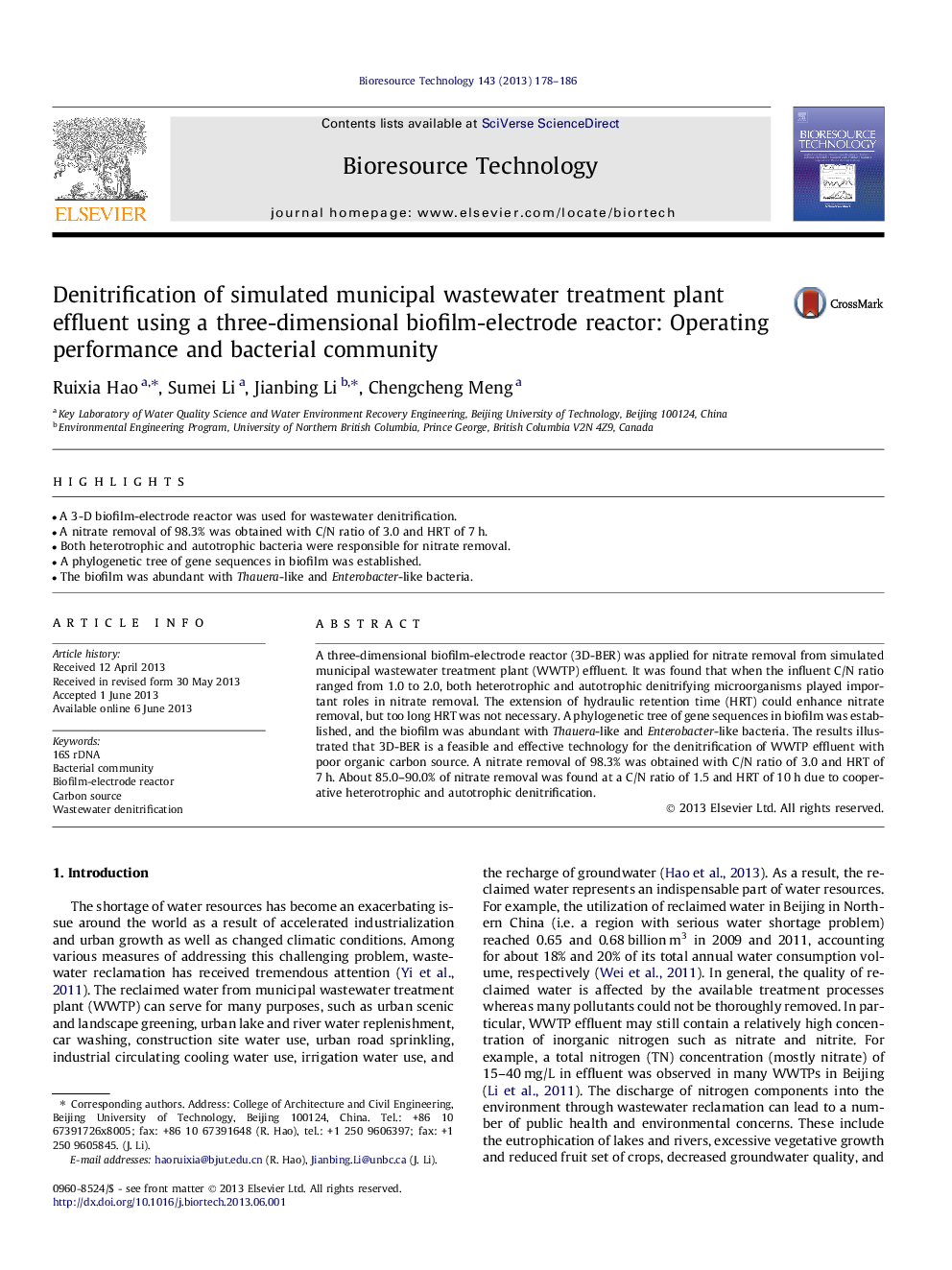| Article ID | Journal | Published Year | Pages | File Type |
|---|---|---|---|---|
| 7081188 | Bioresource Technology | 2013 | 9 Pages |
Abstract
A three-dimensional biofilm-electrode reactor (3D-BER) was applied for nitrate removal from simulated municipal wastewater treatment plant (WWTP) effluent. It was found that when the influent C/N ratio ranged from 1.0 to 2.0, both heterotrophic and autotrophic denitrifying microorganisms played important roles in nitrate removal. The extension of hydraulic retention time (HRT) could enhance nitrate removal, but too long HRT was not necessary. A phylogenetic tree of gene sequences in biofilm was established, and the biofilm was abundant with Thauera-like and Enterobacter-like bacteria. The results illustrated that 3D-BER is a feasible and effective technology for the denitrification of WWTP effluent with poor organic carbon source. A nitrate removal of 98.3% was obtained with C/N ratio of 3.0 and HRT of 7Â h. About 85.0-90.0% of nitrate removal was found at a C/N ratio of 1.5 and HRT of 10Â h due to cooperative heterotrophic and autotrophic denitrification.
Related Topics
Physical Sciences and Engineering
Chemical Engineering
Process Chemistry and Technology
Authors
Ruixia Hao, Sumei Li, Jianbing Li, Chengcheng Meng,
